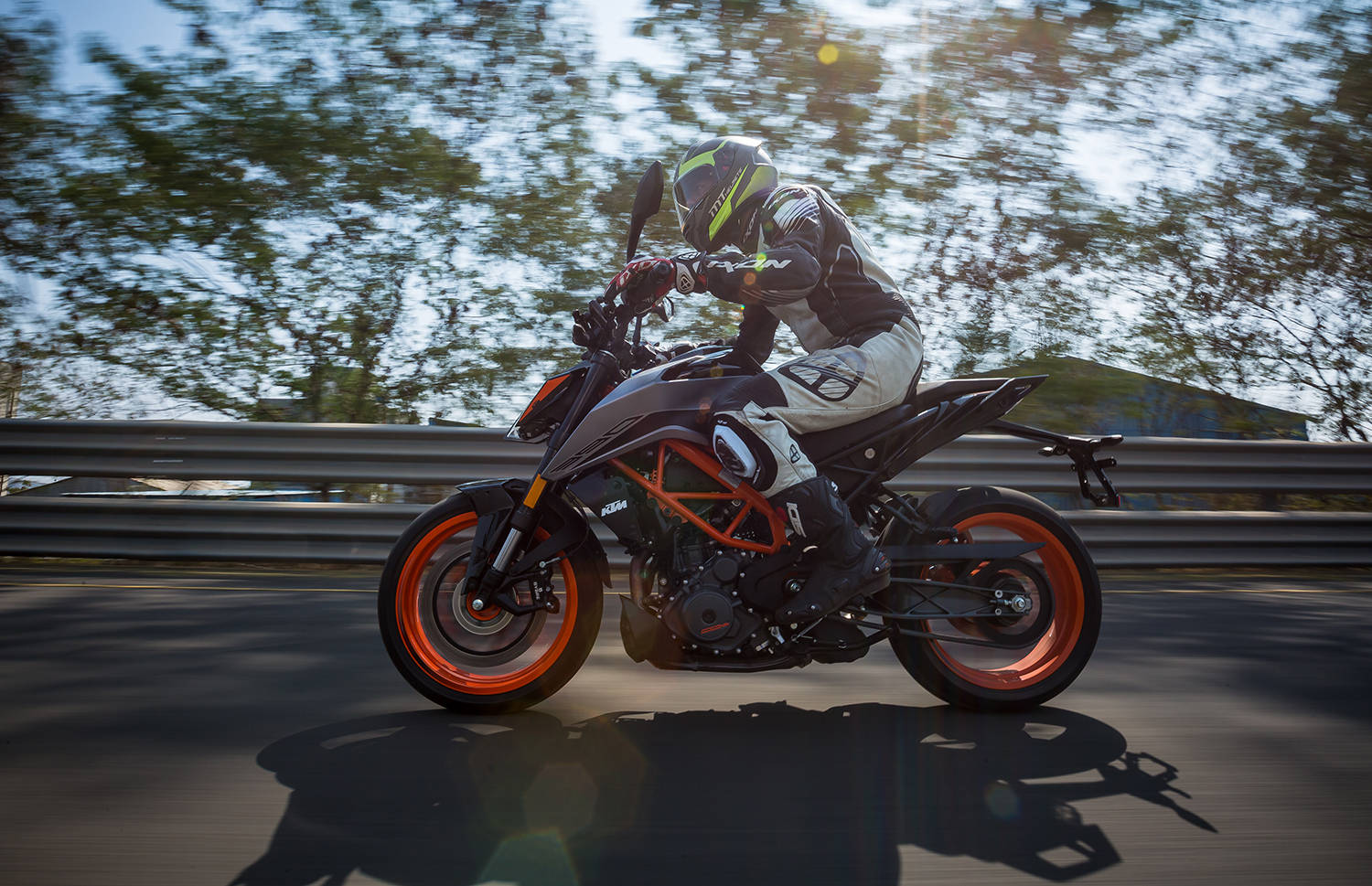2020 KTM 390 Duke BS6: Review Picture Gallery
Published On February 27, 2020 10:01 IST
By Alpesh Rajpurohit for KTM 390 Duke (2017-2023)
- 1986 Views
Are the updates on the 390 Duke BS6 significant enough for you to shell out Rs 5,000 more? Let’s find out

The KTM 390 Duke has been updated to meet the upcoming BS6 emission norms. But apart from a cleaner engine, the 2020 390 Duke only gets a couple of minor updates considering it received a major overhaul in 2017. First off, the 390 Duke BS6 comes with two new paint options. Secondly, it gets a bi-directional quickshifter as standard! These small changes have made the new 390 Duke Rs 5,000 more expensive than before. So if you are planning to add the 390 Duke to your garage, then here’s our review of the updated 390 Duke… in images. ‘Cause images make everything pretty!
Also read: 2020 KTM 390 Duke BS6: First Ride Review

KTM has introduced two new colours for the 390 Duke -- grey and white.

To our eyes, the grey bike with its orange frame and black rear end looks more attractive than the white one.

Despite the updates, KTM has managed to retain the 390 Duke’s power output - 43.5PS and 37Nm. Kerb weight has gone up by 4kg though, with the updated model now tipping the scales at 167kg.

Even with the added weight and an updated motor, we didn’t feel any drop in terms of performance.

The extra kilos it has put on is thanks to a revised exhaust which is now routed to run below the engine rather than around the cylinder head as before.

Ground clearance has gone down to 151mm, 24mm lower than before. This is could be a cause for concern for some as the bike now runs a greater risk of scraping the exhaust now.

As a solution to this problem, KTM has provided a small protective bash plate. But we’ll only know how effective it is once we get our hands on the bike for a road test.

The quickshifter on the 390 Duke measures the rotation of the gear shifter shaft via a sensor located on the right side of the engine.

Hence, it takes a bit longer to upshift than traditional quickshifters. Another niggle that we experienced was that once you go beyond 8000rpm, the quickshifter doesn’t work as there is too little time to cut the ignition to allow a seamless upshift.

Clutchless downshifts can be executed but this isn’t an autoblipper. When a downshift is detected through the rotation of the shaft, this system injects a small amount of fuel into the engine to increase the revs a little bit to carry out the downshift. It is not as seamless as it sounds and could lead to the rear wheel hopping.

Considering that not much has changed in the performance as well as dynamic ability of the bike, it should still be a delight for those who are looking to step up from 200cc-250cc motorcycles, or those looking for an exciting little motorcycle to thrash around on a winding mountain road.

However, the quickshifter’s shortcomings mean that it is there for more bragging rights among your mates rather than being an actual performance-oriented piece of kit that could help you shave off milliseconds on the track.
